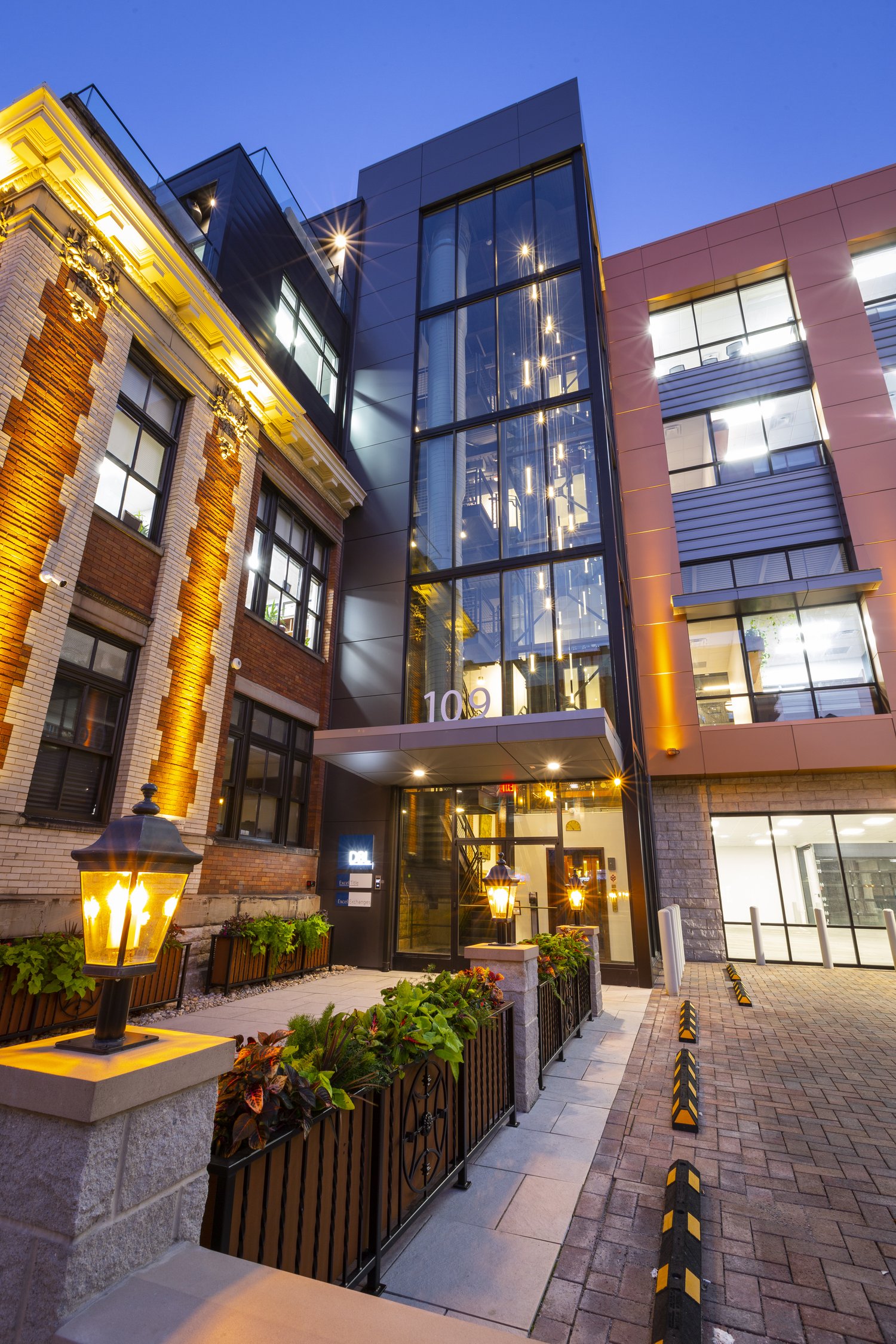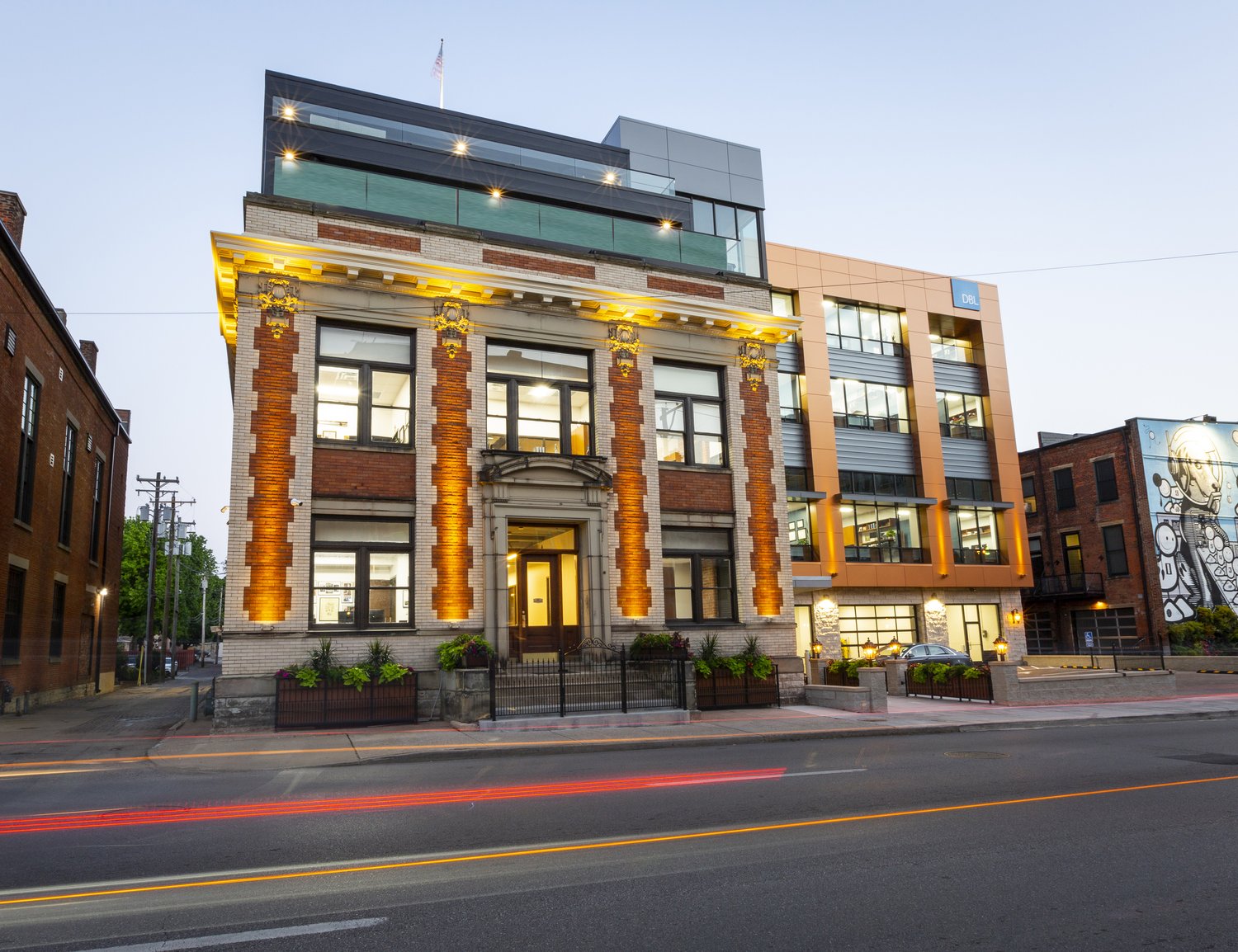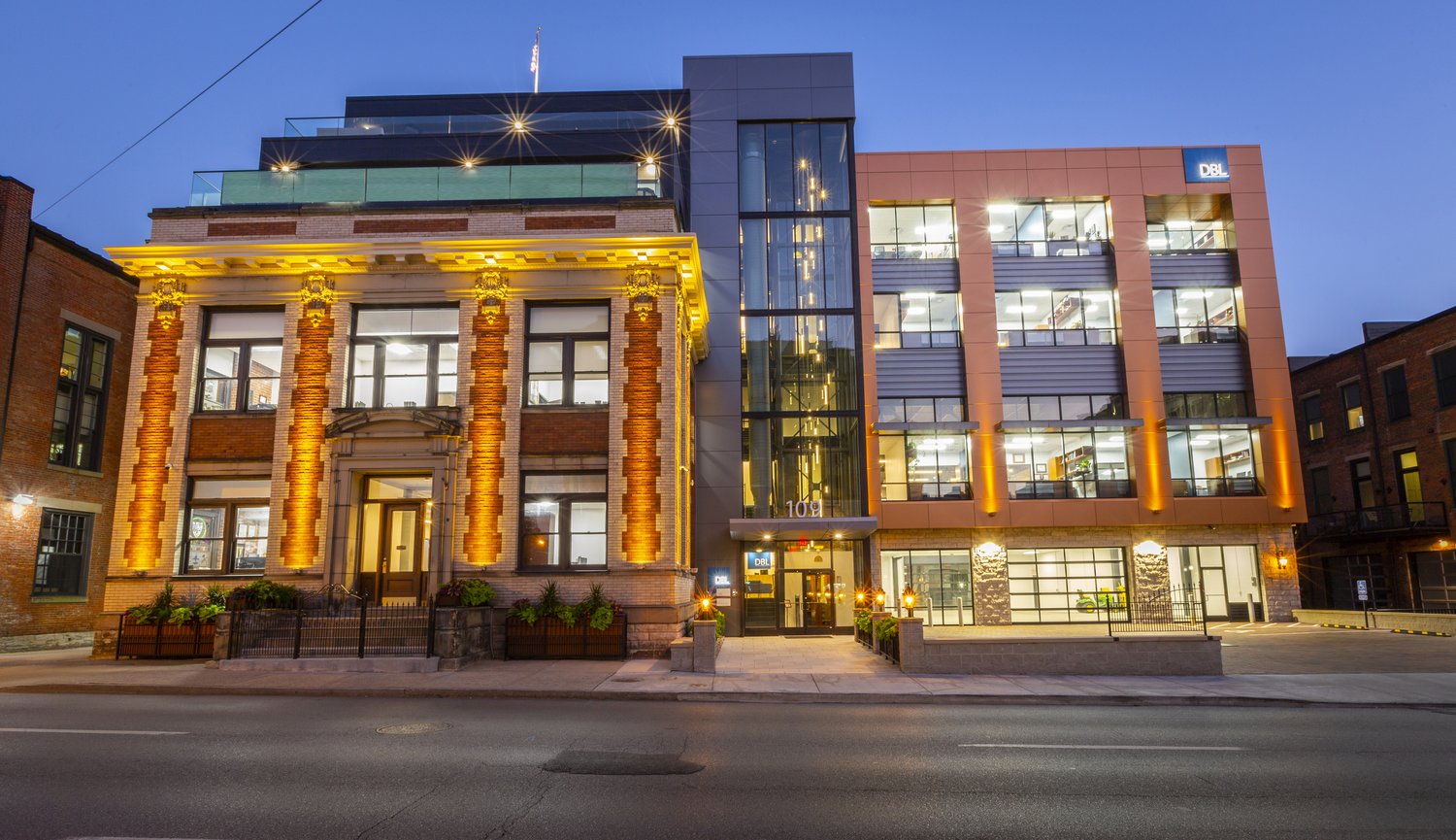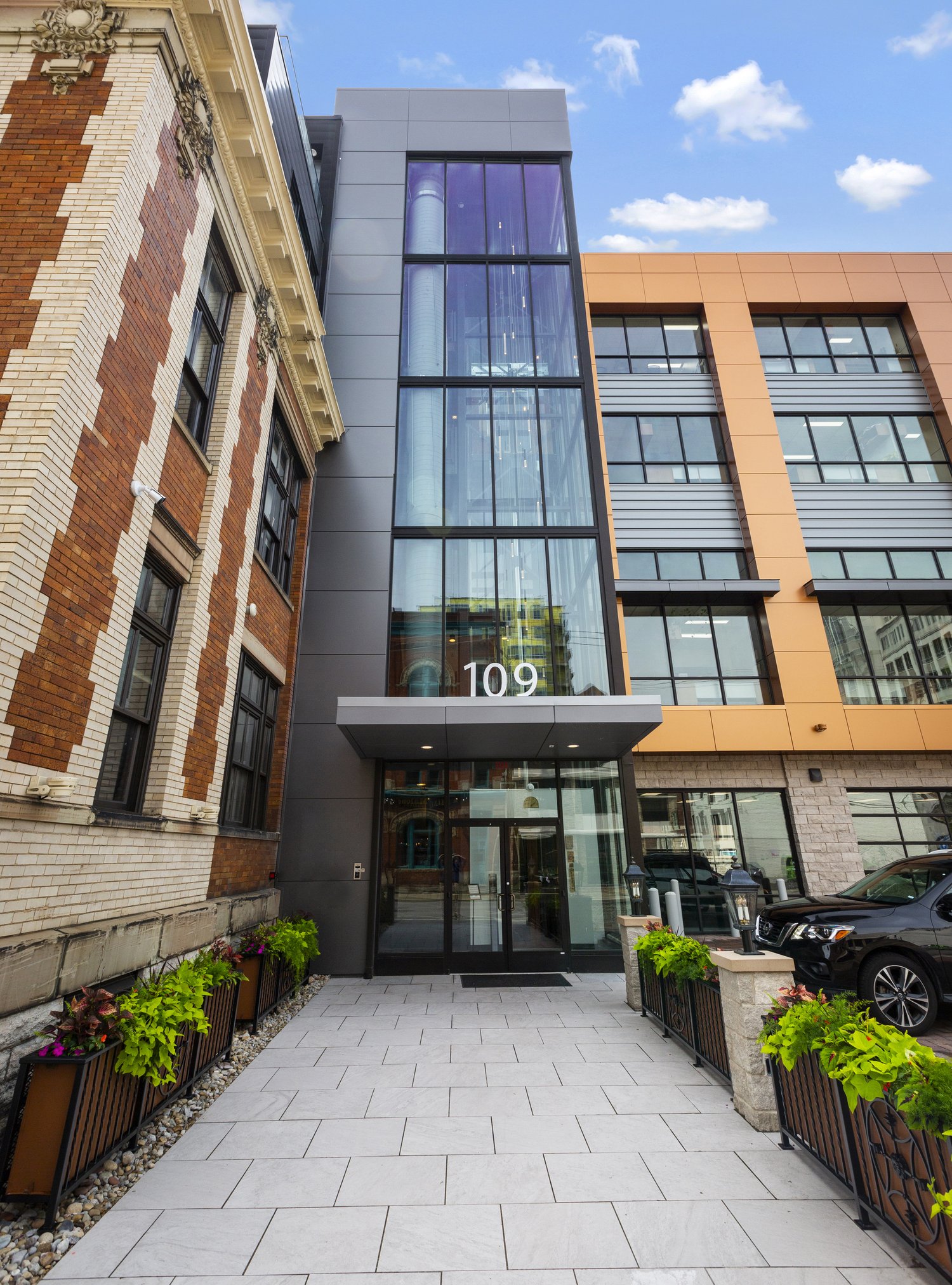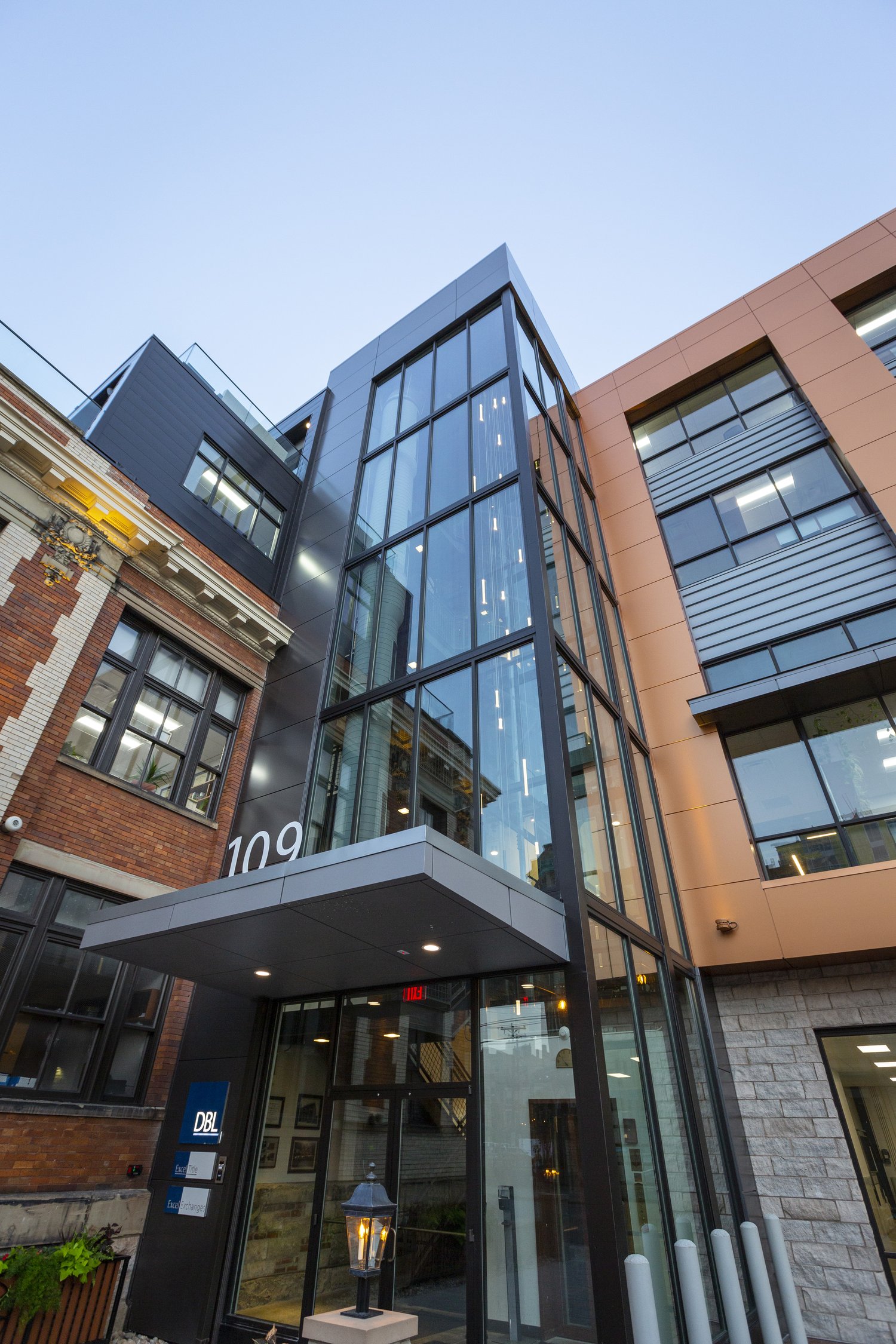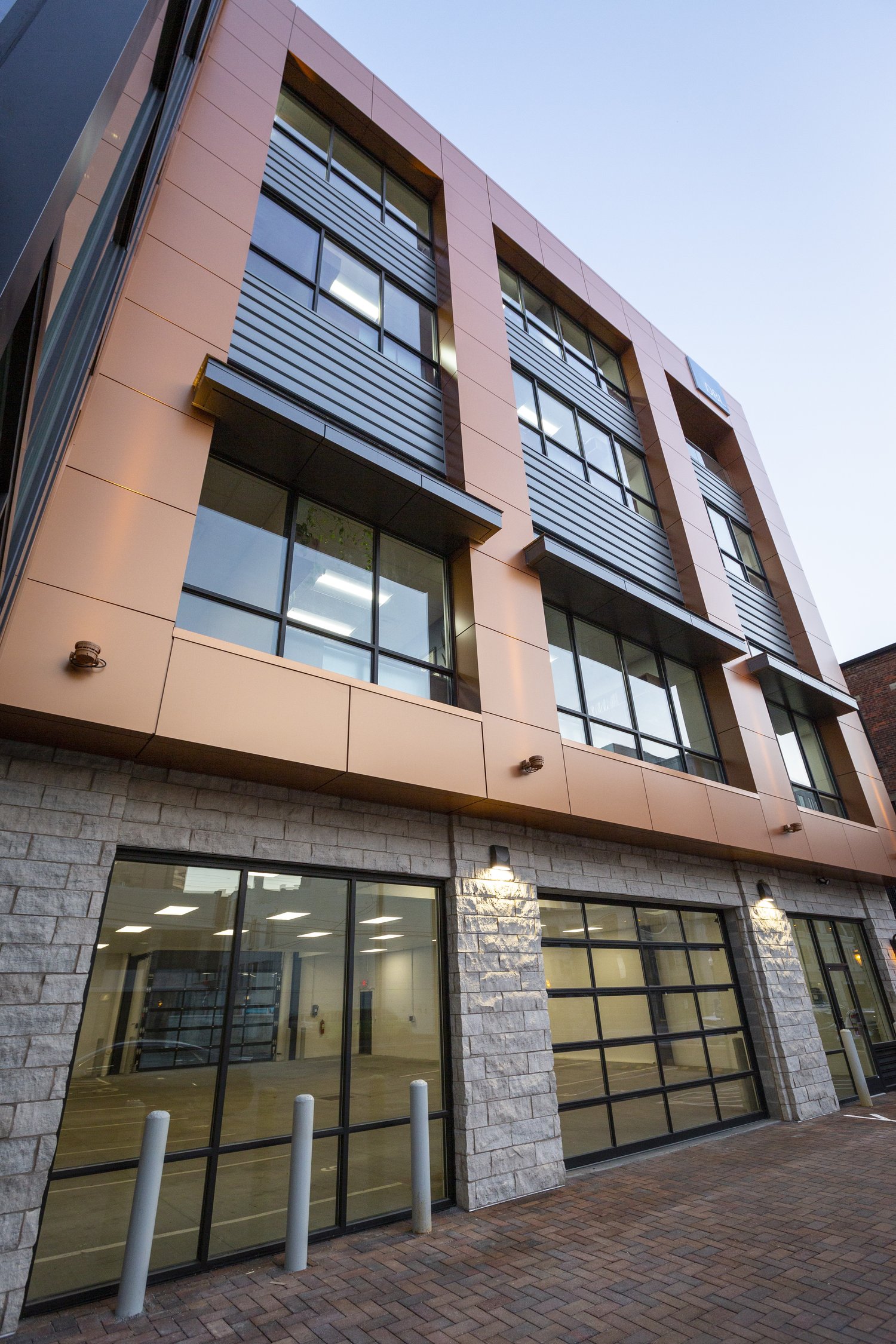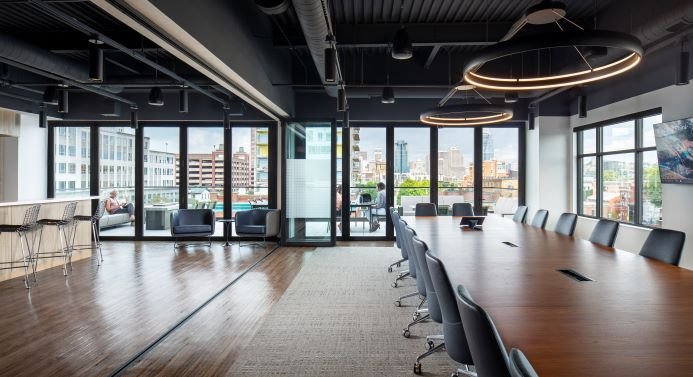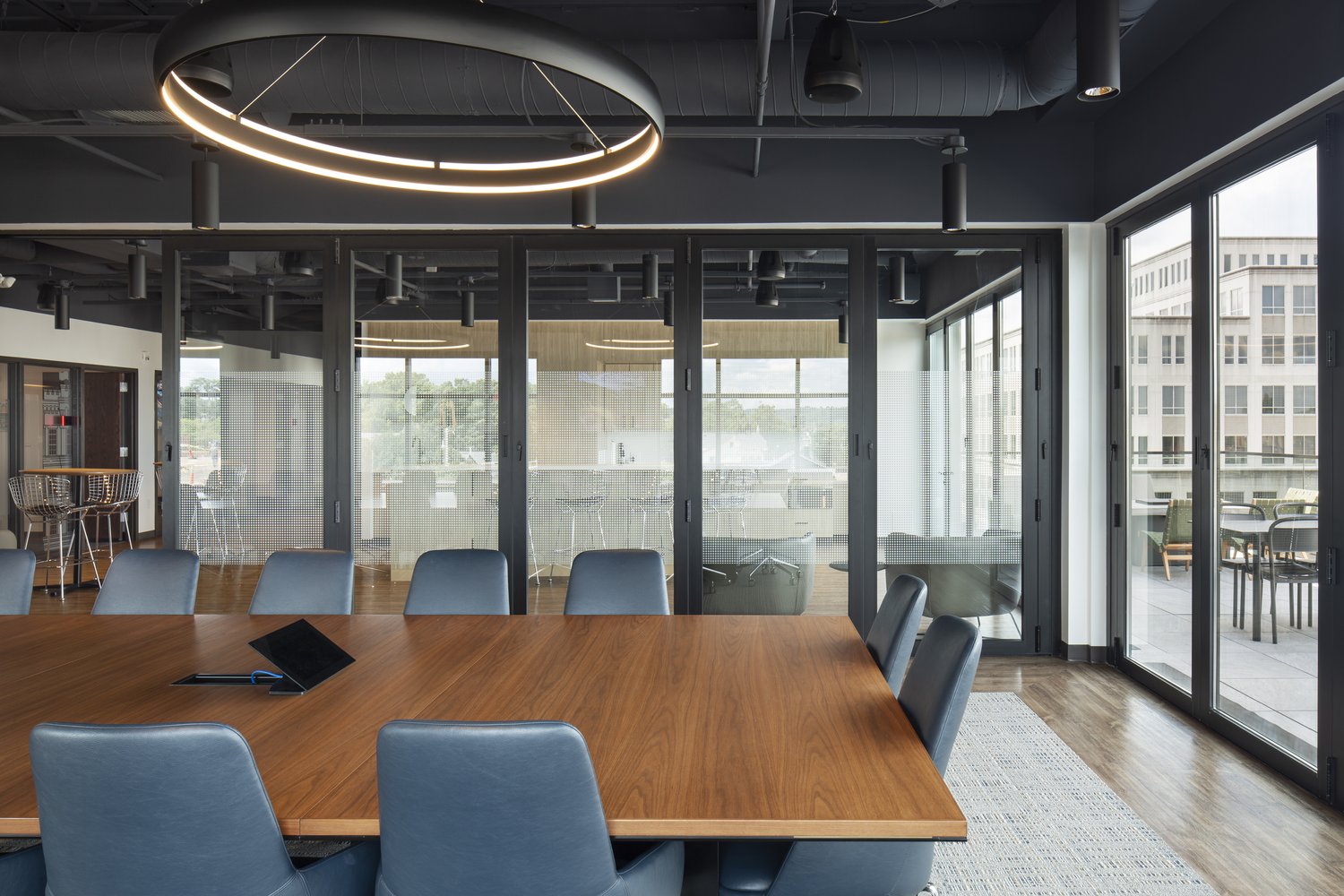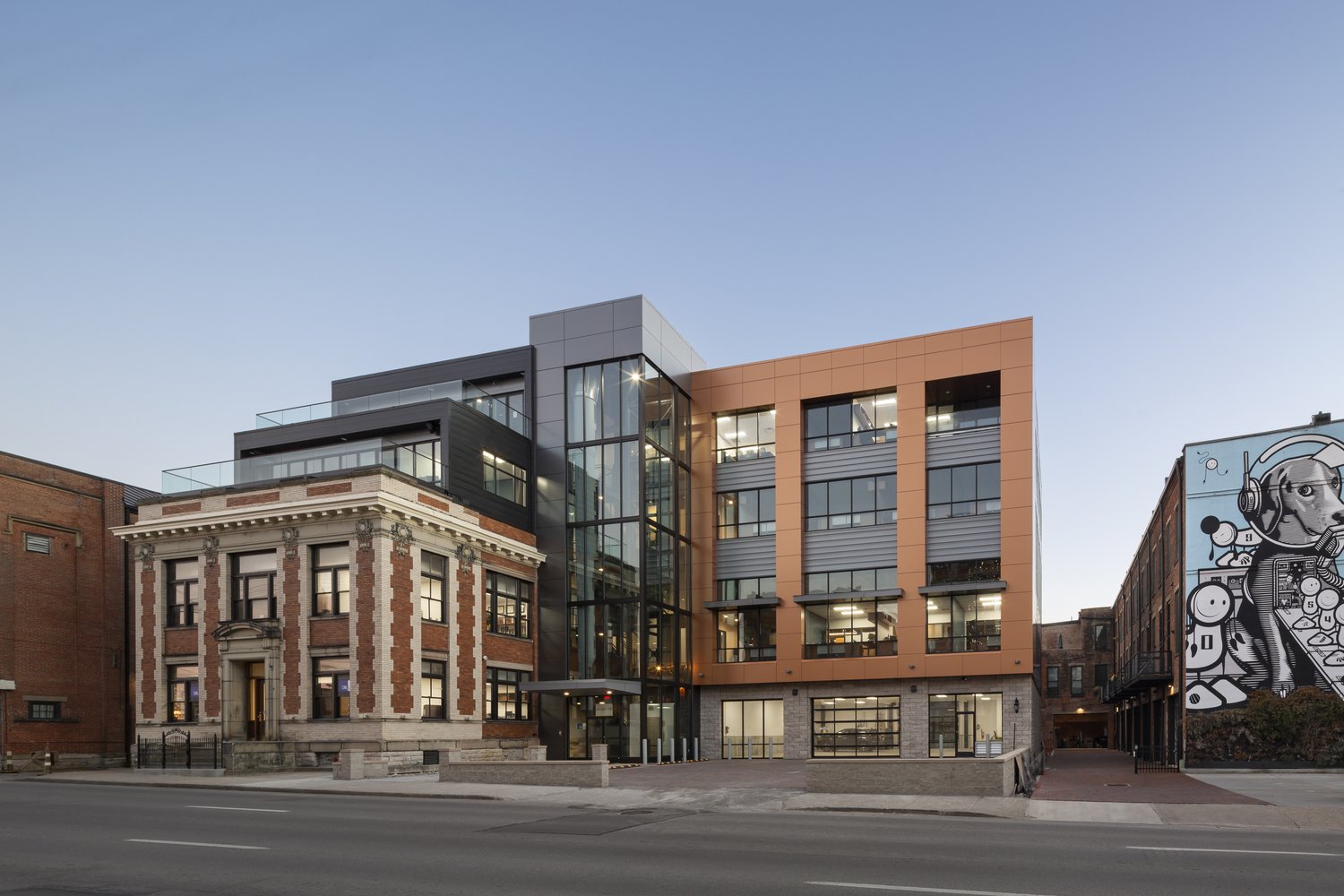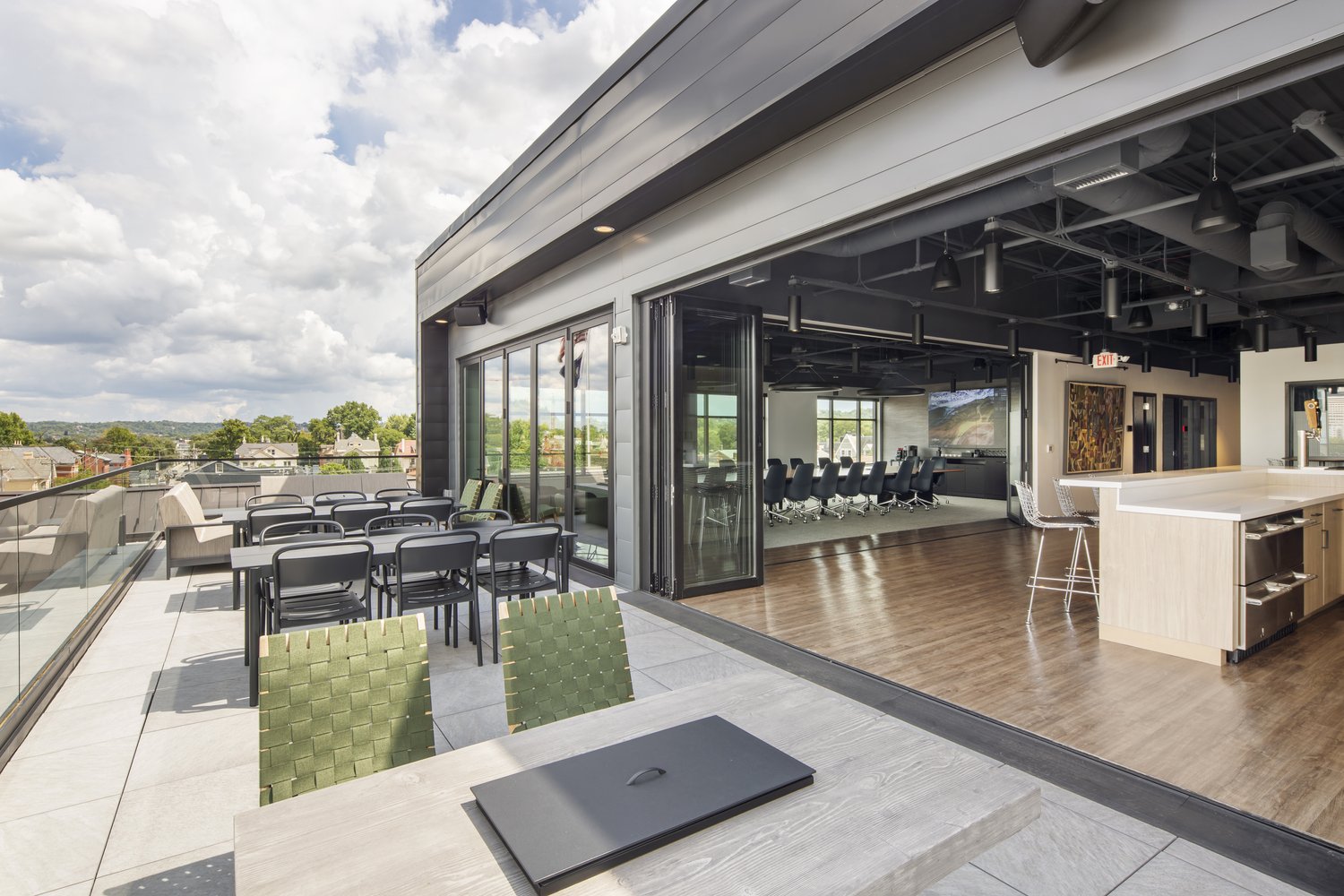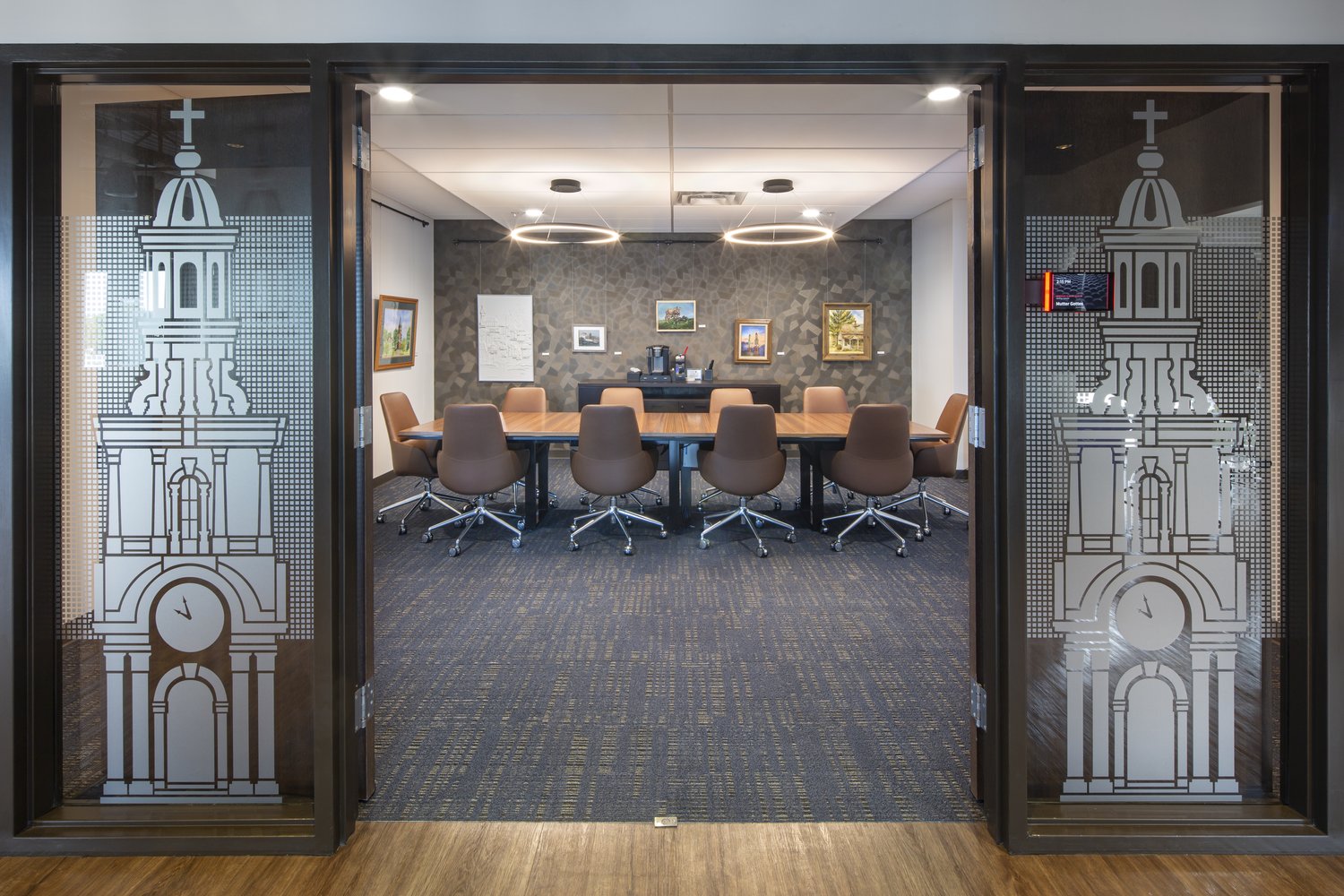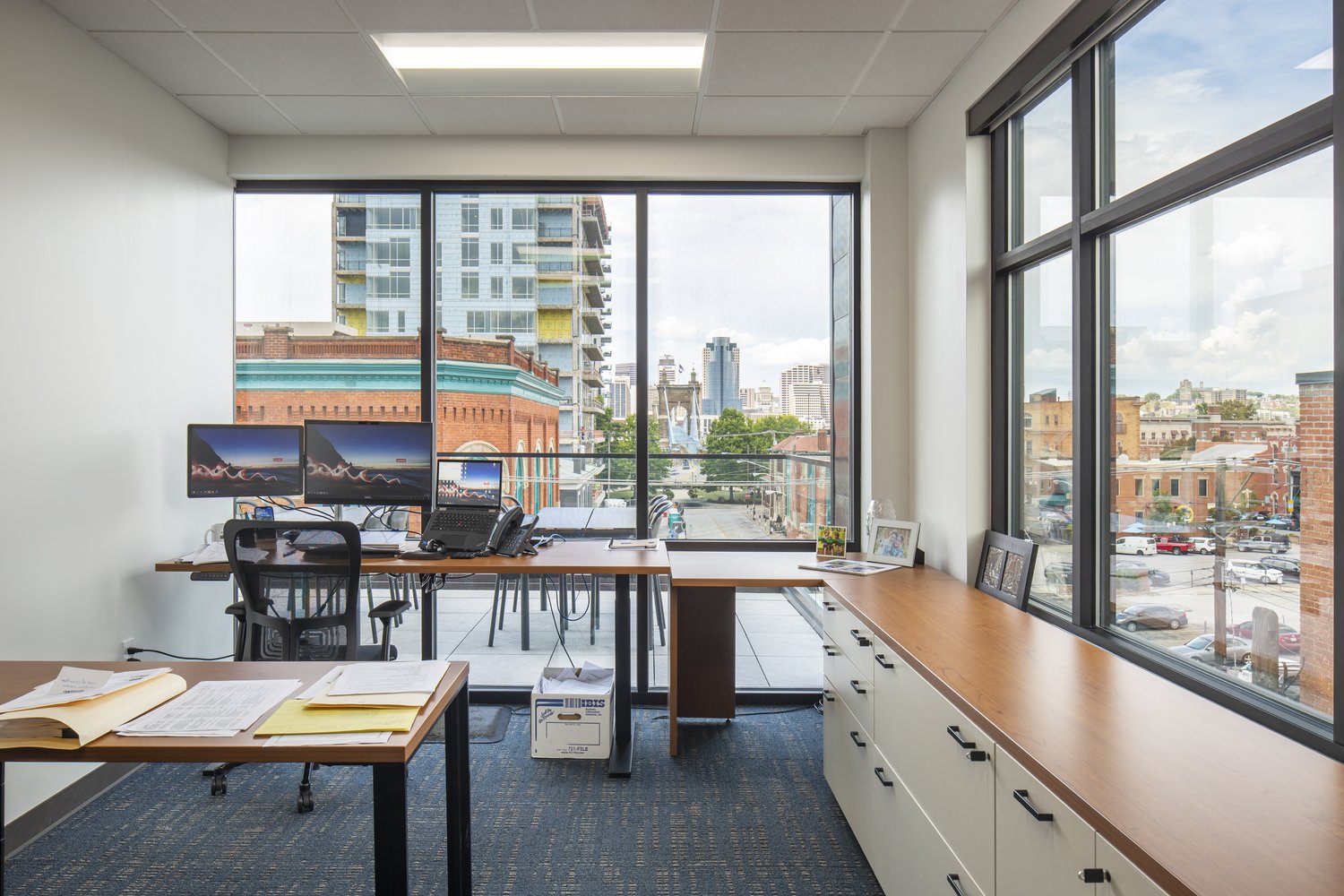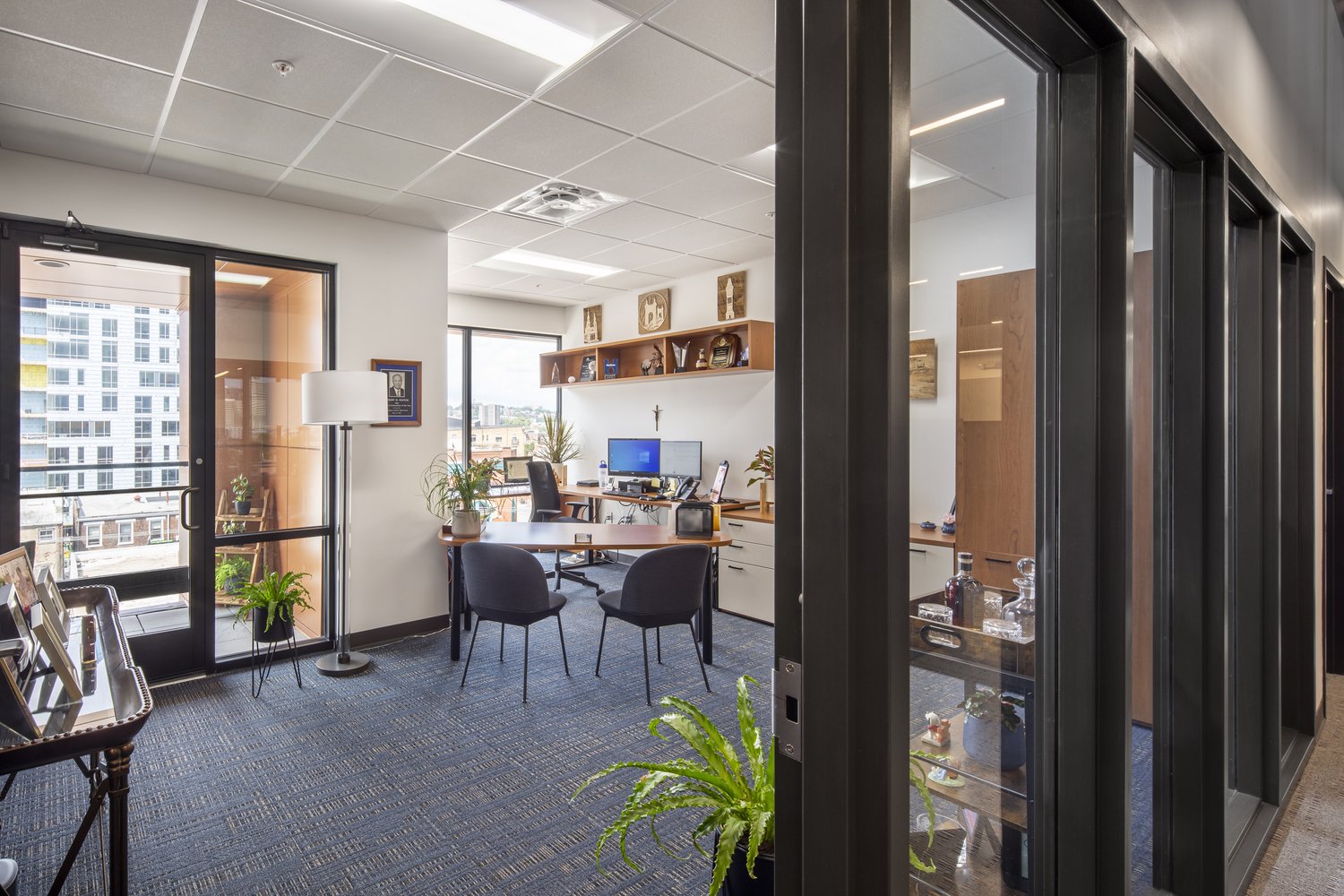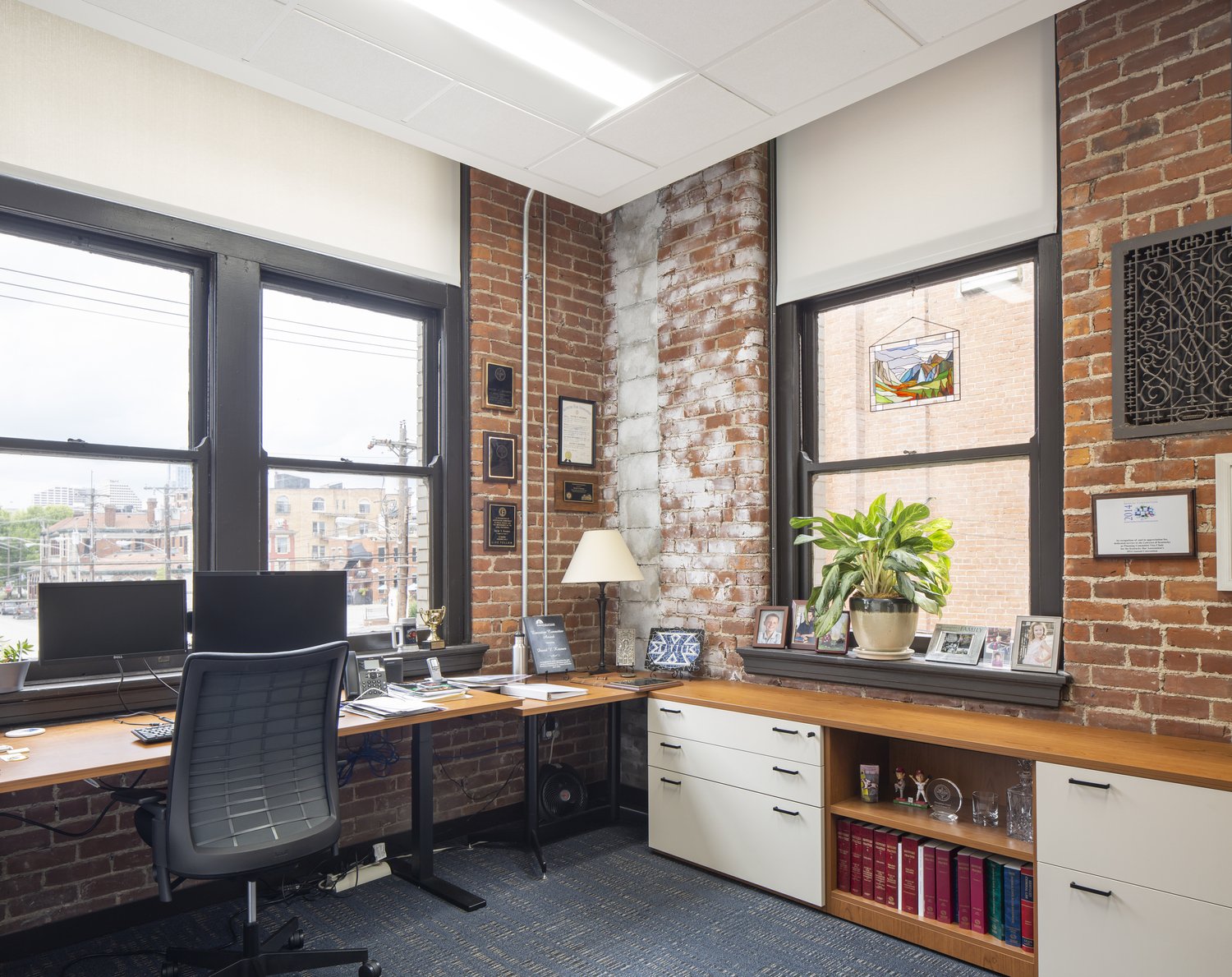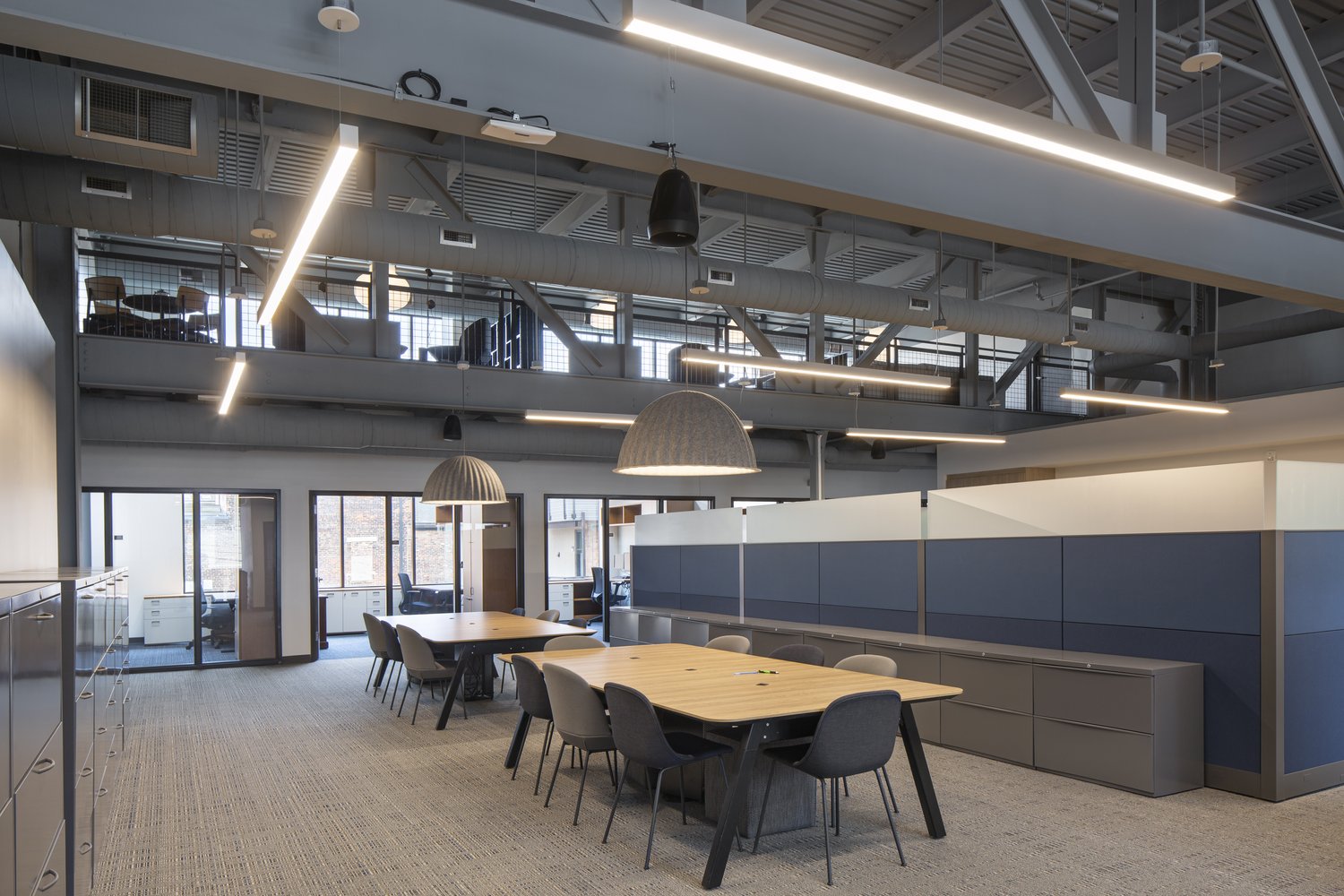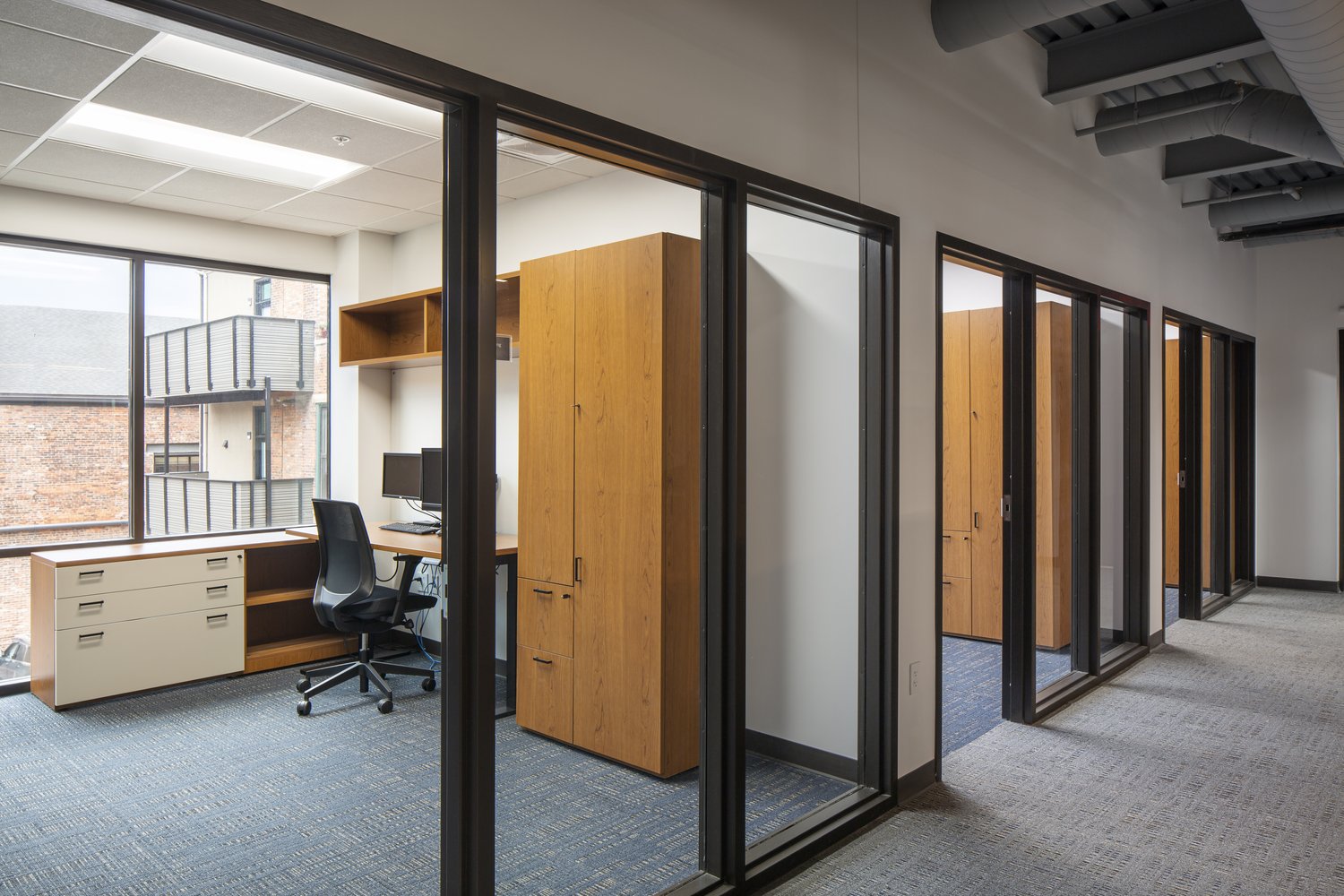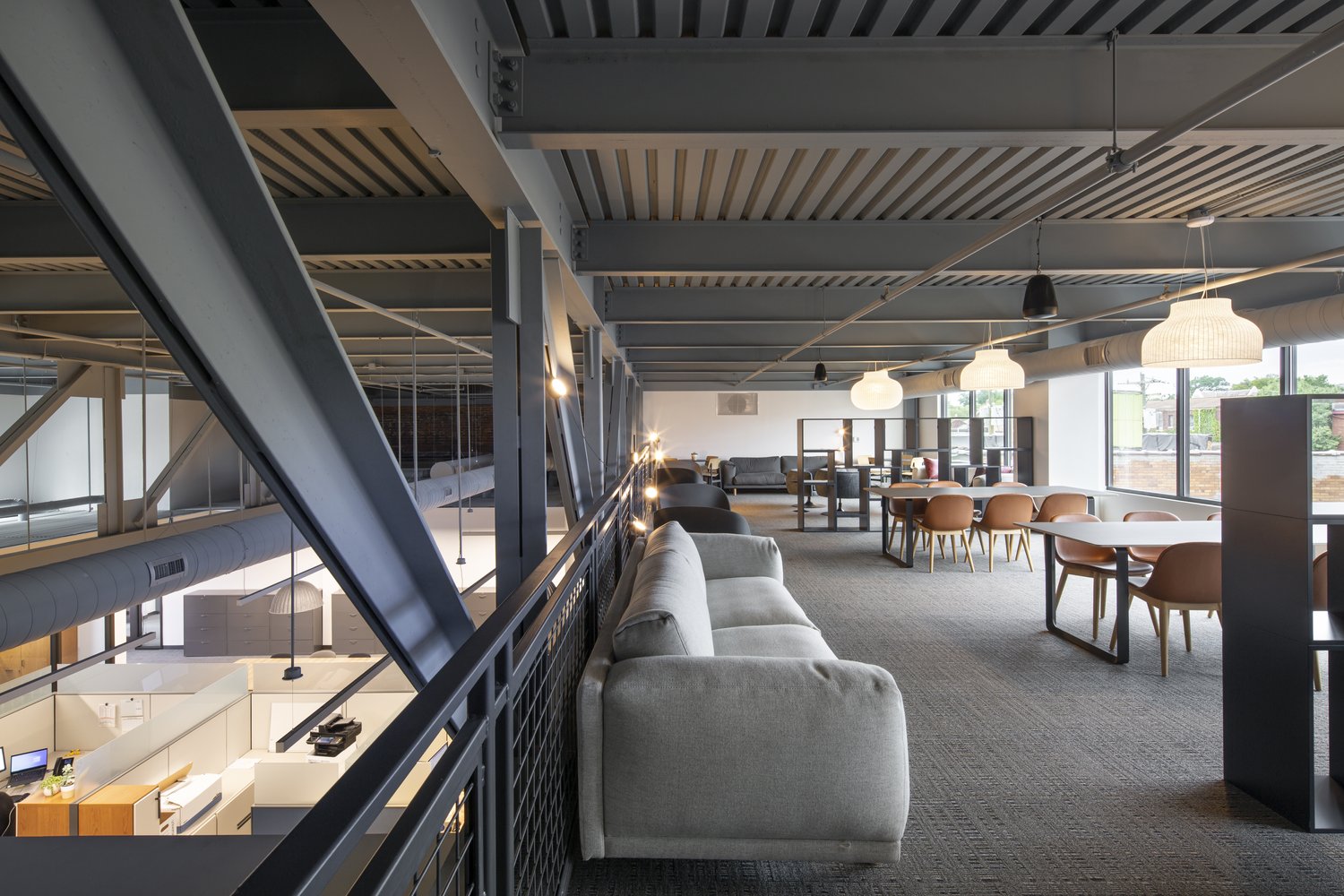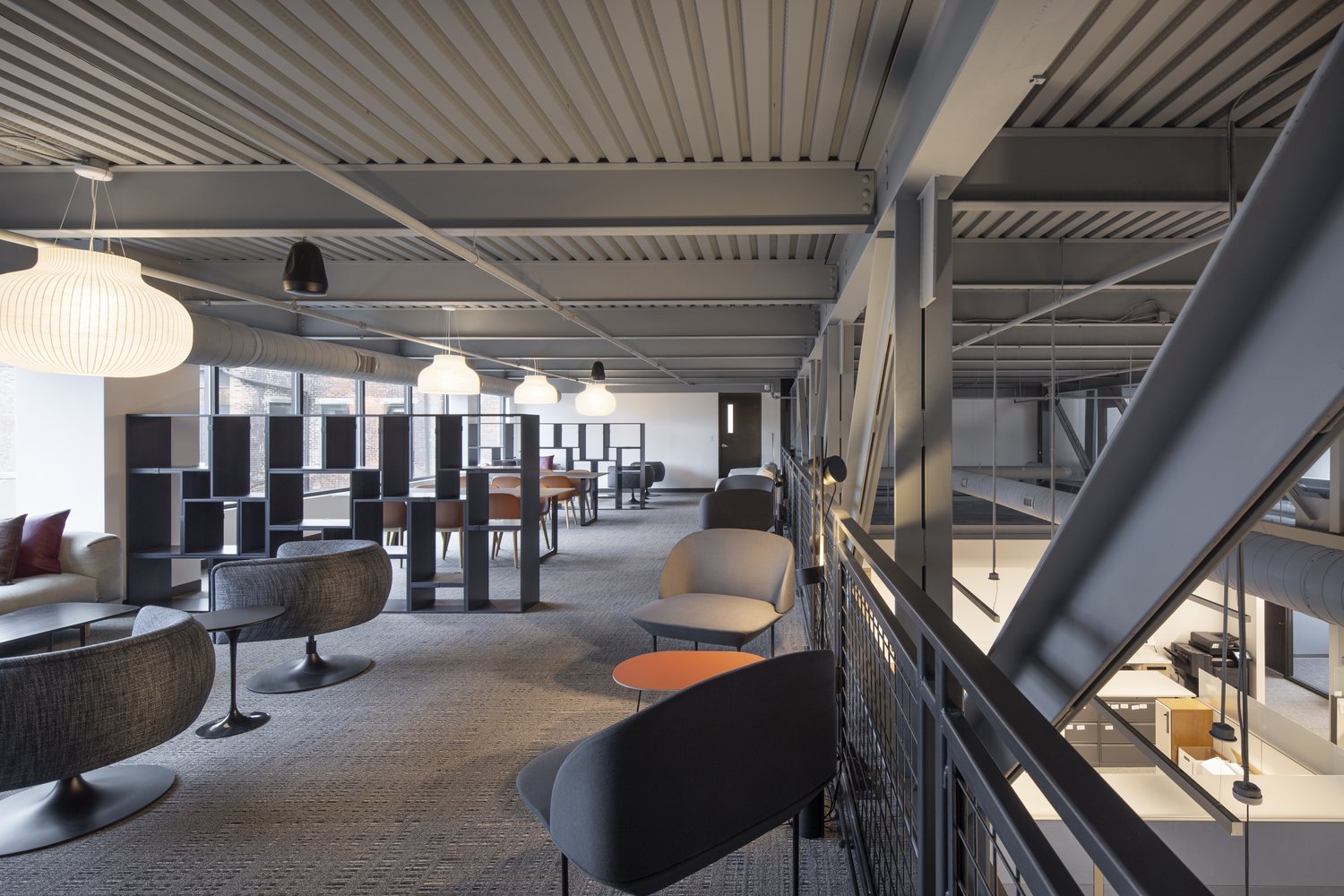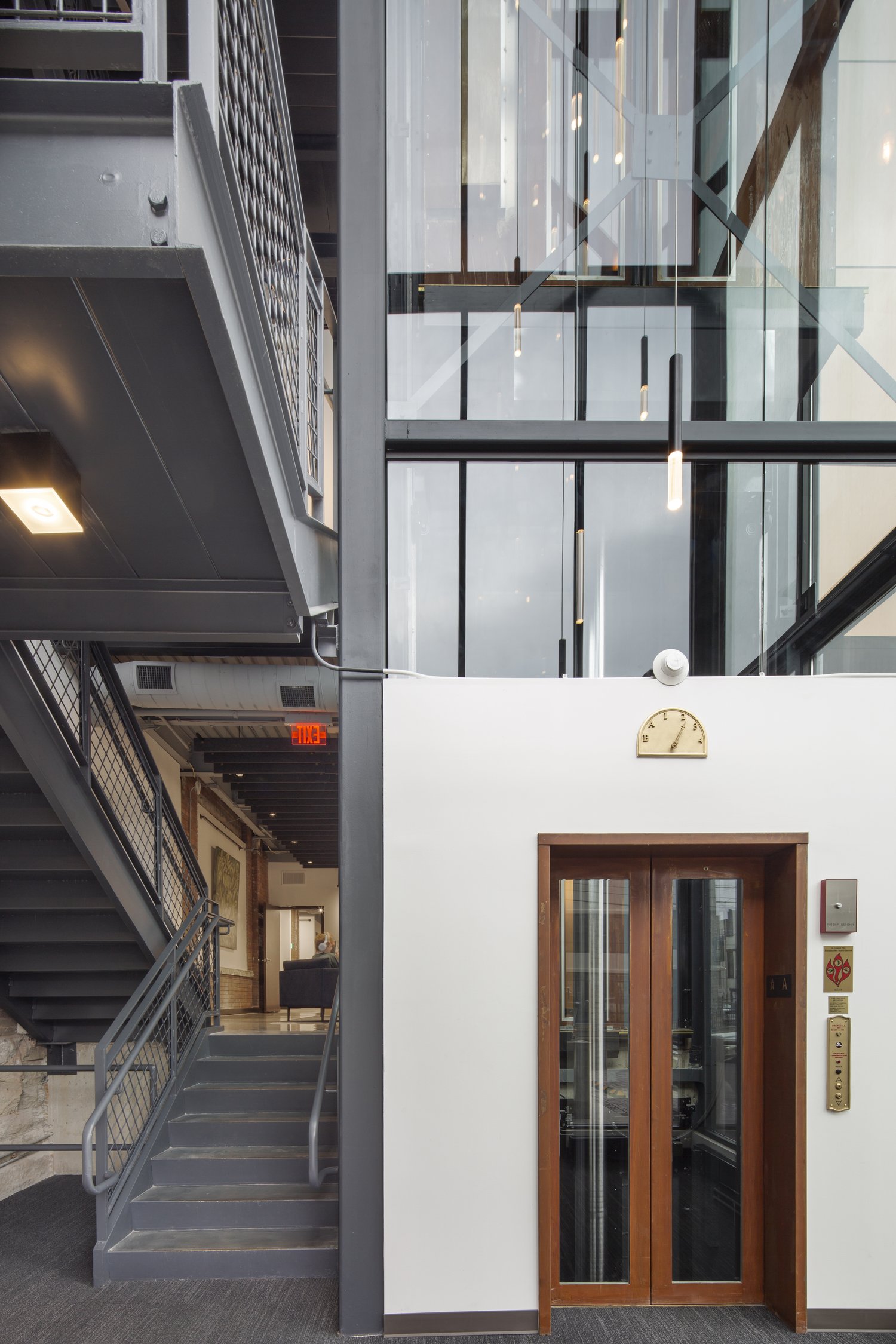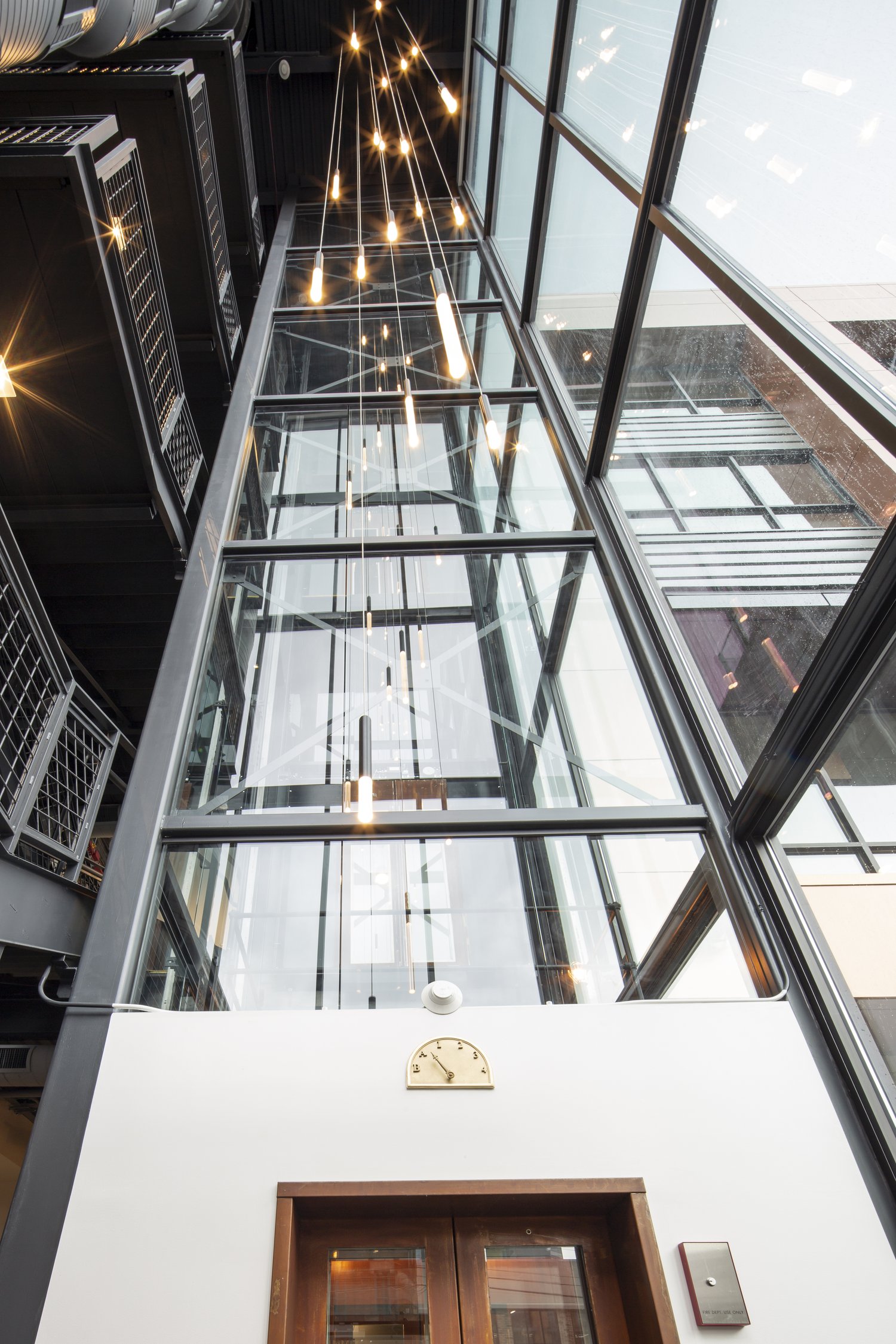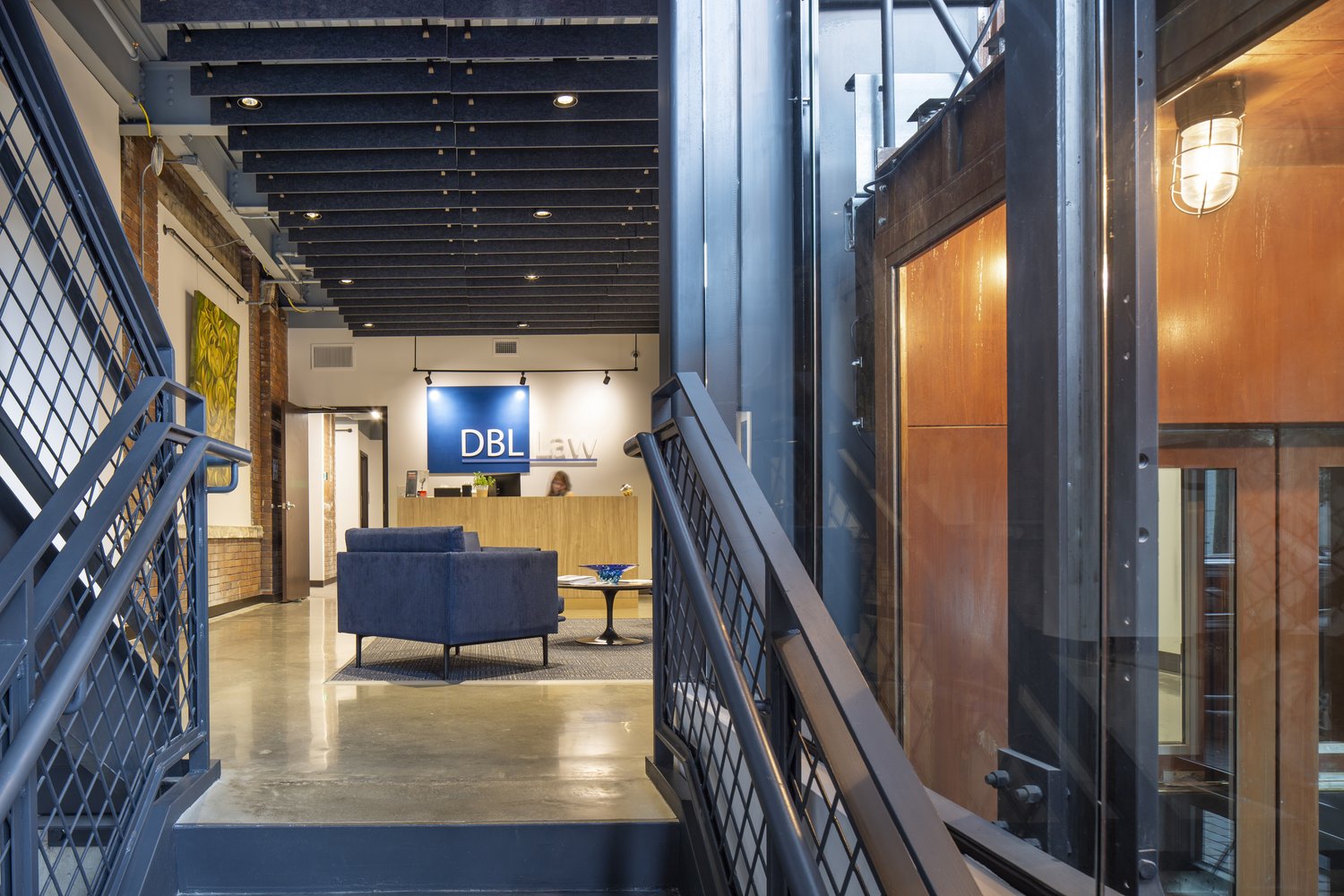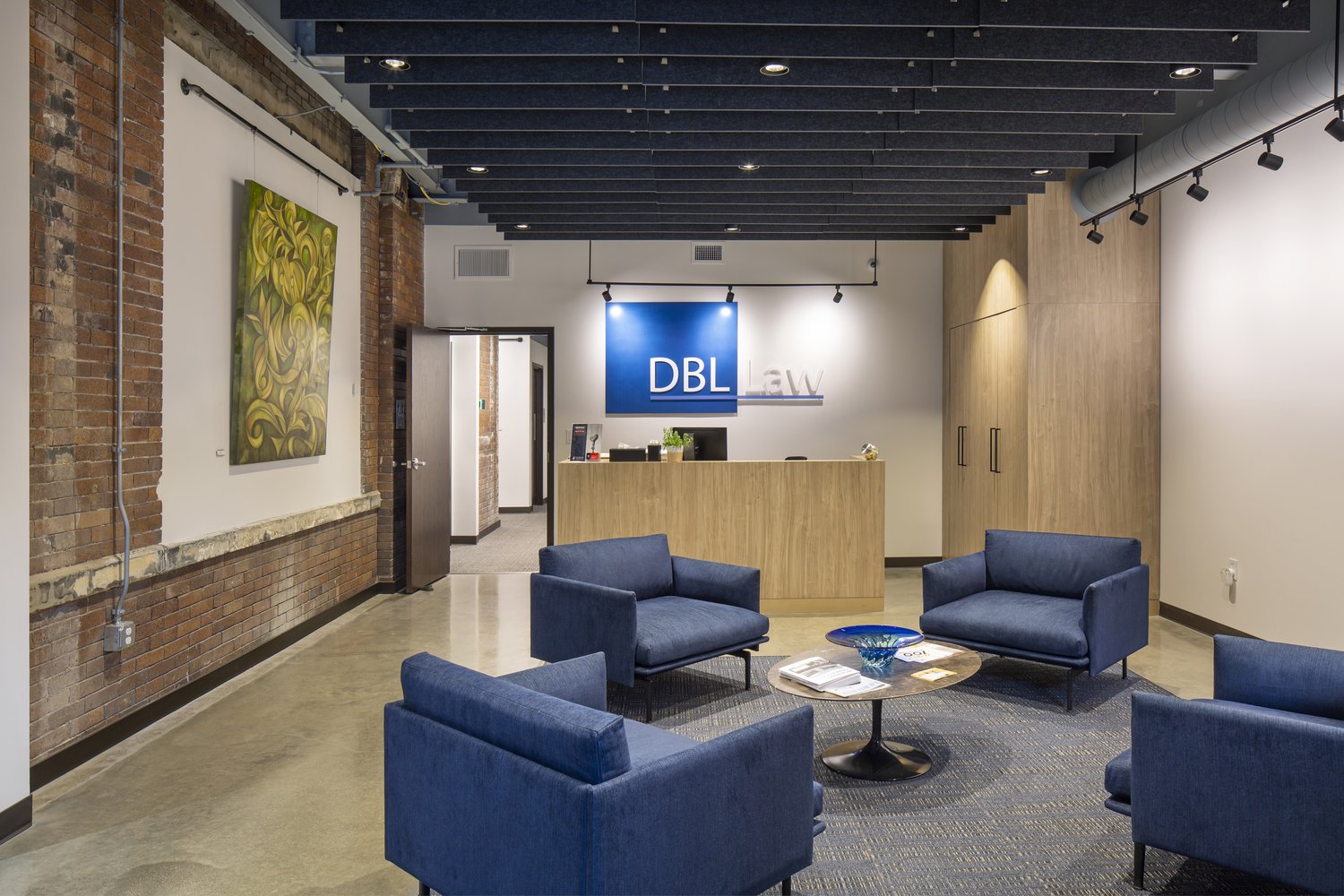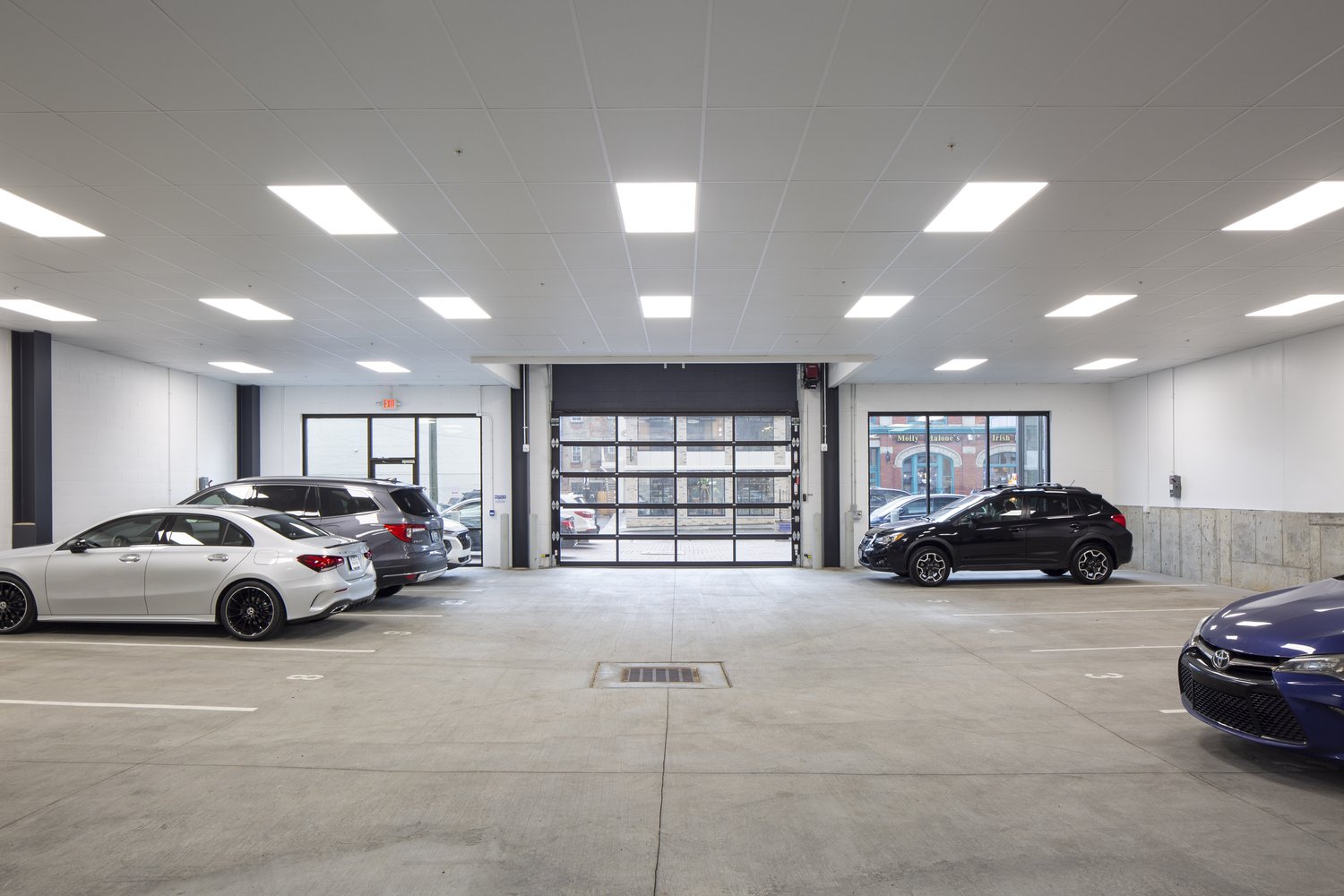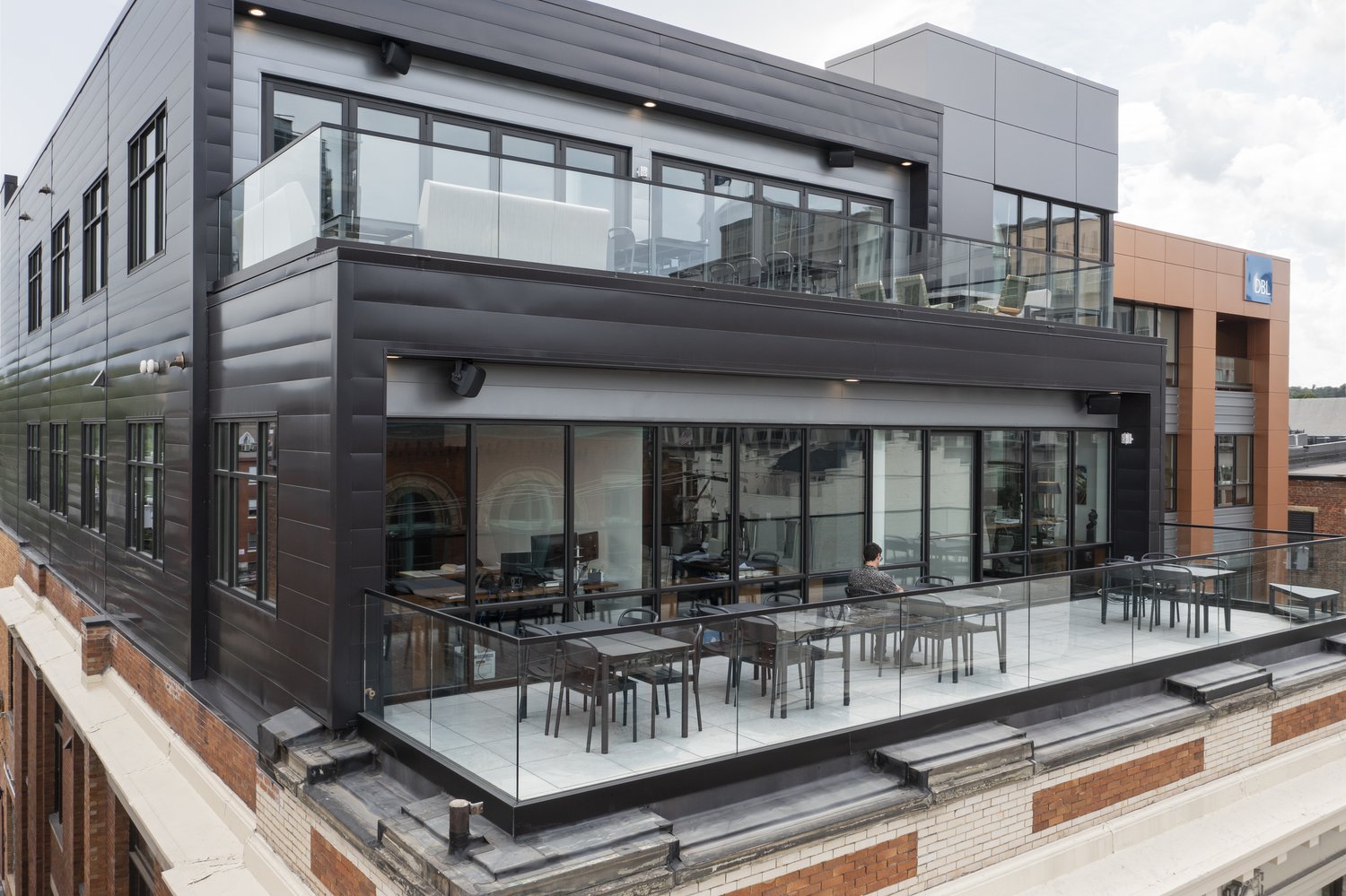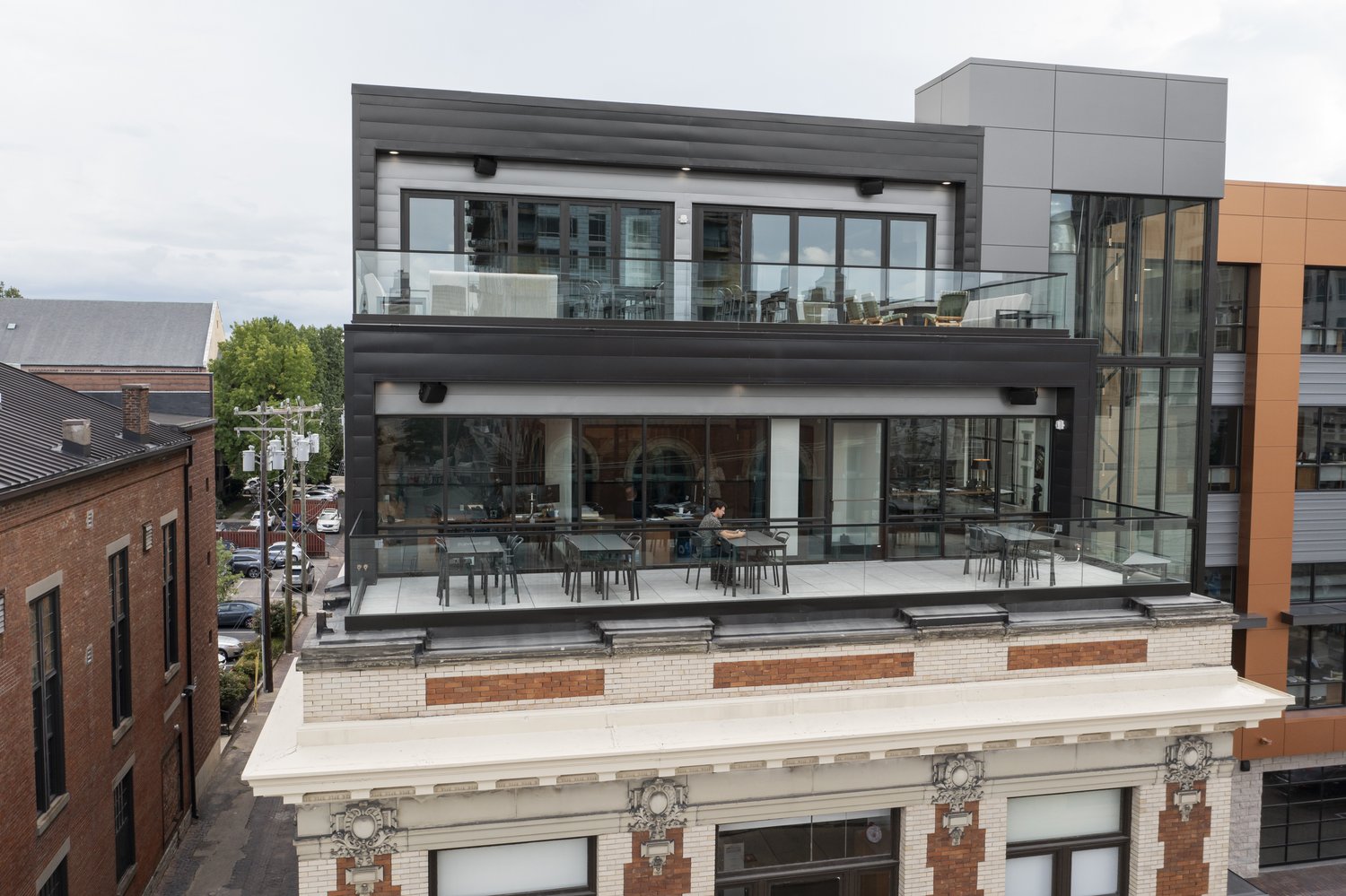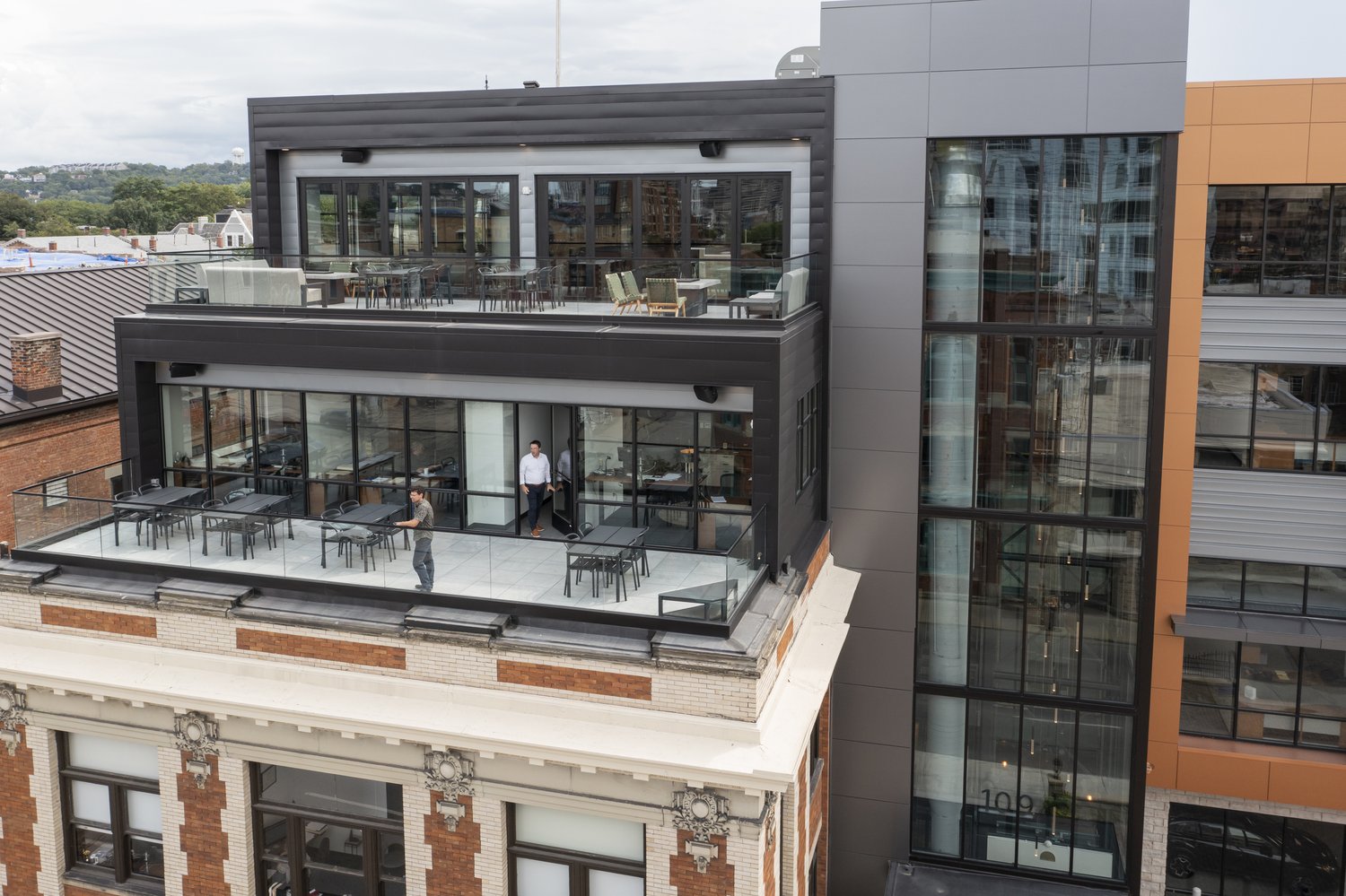We worked closely with DBL Law, the City of Covington, and the developer for over four years to design the signature, legacy building known as the Monarch Building. DBL’s signature building is an example of how good design can propel a business forward. Their desire to have their office in an urban location speaks to current trends of business’s blossoming when they exist within a dense urban area with walk-able amenities such as restaurants, bars, and hotels.
A Signature Building Can Elevate Your Business.
The Monarch Building, designed in collaboration with DBL Law and the developer, stands as a testament to the power of good design in propelling a business forward. Over the course of four years, we worked closely with the developer to create a signature building that would not only serve as a legacy for the firm but also contribute to building employee loyalty and fostering a sense of community.
DBL Law’s decision to establish their office in an urban location was a strategic move that aligned with the current trends of businesses thriving in dense urban areas. The appeal of the Monarch Building lies not only in its architectural prowess but also in its ability to inspire a unique culture. The building’s design and location within a vibrant urban environment, with walkable amenities such as restaurants, bars, and hotels, have played a significant role in attracting and retaining talent.
Design Can Impact Employee Attraction and Employee Retention.
In an era where large local firms were experiencing “attorney-poaching” as a recurring challenge, DBL Law has managed to avoid such setbacks. The Monarch Building’s allure, combined with the culture it embodies, has helped create a sense of belonging and loyalty among the firm’s attorneys. By providing an attractive and inspiring workplace, DBL Law has fostered an environment where attorneys feel valued and motivated to remain with the firm. Yes, Design can impact employee retention as well as be a beacon in employee attraction.
Design can influence business revenue.
The Monarch Building stands as a symbol of DBL Law’s commitment to excellence and innovation. Its design has not only elevated the firm’s corporate image but also contributed to the growth and success of the firm as well as the success of the surrounding community. Through this collaborative effort, DBL Law has demonstrated that a well-designed building can serve as a catalyst for elevating their business, fostering a vibrant culture, and attracting and retaining top talent in the legal industry.
Elements of the Design.
We combined elements of new construction and rehabilitation to create a truly unique space. With 75% new construction and 25% rehabbing of an existing structure, the building seamlessly blends modern design with the rich history of its surroundings. The existing Monarch Building is a gorgeous petite two story brick structure. We were extremely conscious in the design phase to assure any additions or alterations did not overpower the existing structure. That is why we chose to add two stories on top of the existing building and pull them back from the street-facing front façade. We also pulled our main vertical circulation element back from the façade. This vertical element incorporates the main entry with a glass elevator and winding stair. For new four-story portion of the building with parking at the first level and then three stories of office on top it, it was important that it paid homage to the vertical elements of the original historic building’s façade while adding design elements that were modern, playful and striking.
Design driven by data and psychology:
The Monarch Building was meticulously designed with the principles of psychology about employee wellness and psychological safety in mind. Natural light floods every workspace. We intentionally created an open and inviting atmosphere that promotes a positive mindset. Thoughtfully designed communal areas, such as break rooms, lounges, and collaborative spaces, encourage spontaneous interactions and facilitate informal conversations, fostering a sense of connection among employees enhancing the firm’s unique culture.
The layout and configuration of the building were carefully planned to optimize productivity as well as collaboration. Shared spaces, such as meeting rooms and co-working areas, were strategically positioned to promote cross-team collaboration and communication. Private offices and quiet zones were also incorporated to offer individuals a sanctuary for focused work when needed.
The Result:
In the ever-evolving world of business, the Monarch Building stands as an exemplary model of how design can tackle and address the vital issues psychology and psychological safety in an urban office environment. By prioritizing the well-being and happiness of its occupants, the building exemplifies the transformative power of design in shaping a workplace that nurtures and supports the people within it.
